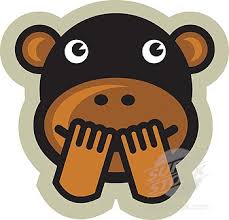It Has to Be Someone's Foot, Right?
How tall are you? About 4 feet or so?
Well, whose feet? Four of your feet? Four of my feet? Four chicken feet?
If we zip back in time a few hundred years, you would actually be able to answer that. Because feet used to belong to people.
Ok, that was silly. Of course feet belonged to people or cats or dogs or what have you. What I meant to say is that the measurement "a foot" was someone's actual foot.
That's one important foot. And who would have such an important foot? The king of course.
So, let's say it is 1776. You would be about 4 of King George III's feet tall. Unless of course you lived in France. Then you would be 4 King Louis XVI's feet tall. And how big were his feet?
I'll show you.
 This is a ruler. Correction...this is the ruler. This brass bar was the exact length of King Louis XVI's foot. This meant people could make copies of this ruler and measure things exactly. Which is nice. Or at least certainly better than dragging the King of France around everywhere and holding his foot up to measure things. I'm sure the King would agree.
This is a ruler. Correction...this is the ruler. This brass bar was the exact length of King Louis XVI's foot. This meant people could make copies of this ruler and measure things exactly. Which is nice. Or at least certainly better than dragging the King of France around everywhere and holding his foot up to measure things. I'm sure the King would agree. There is one problem with this system though. Every time you got a new Ruler you had to get a new ruler. Meaning if the king changed then the foot changed. And a foot in one country was never the same as a foot in another country.
It was all terribly confusing.
Then in 1799 the French had an idea! Why don't we measure the distance from the north pole to the equator, divide that number by 10 million and call it a meter!?
Great idea France. (Actually, America and England had very similar ideas and maybe even better ones, but the French idea is the one that stuck).
 And here is that very first meter. The one, the only, the official meter of France (and most of the world now too). If you had 9,999,999 more platinum bars to go with this one you could put them end-t0-end and stretch them from the cold north pole all the way to the sweaty equator.
And here is that very first meter. The one, the only, the official meter of France (and most of the world now too). If you had 9,999,999 more platinum bars to go with this one you could put them end-t0-end and stretch them from the cold north pole all the way to the sweaty equator. Now, this meter sits in a museum, because they kept coming up with fancier and fancier ways to measure a meter, so this one is no longer the official meter. Now a meter is how far light travels in a vacuum in one two-hundred ninety-nine million, seven-hundred ninety-two thousand, four-hundred fifty-eighth of a second.
Like I said, fancy.
 And it wasn't just length the French decided to clear up in 1799. They tackled weight too. This is the first official kilogram. I nice change from the pound which used to be equal to the weight of 7,000 barley seeds. Not 6,999 tiny barley seeds. Not 7,001 tiny barley seeds. But exactly 7,000 tiny barley seeds. Count carefully.
And it wasn't just length the French decided to clear up in 1799. They tackled weight too. This is the first official kilogram. I nice change from the pound which used to be equal to the weight of 7,000 barley seeds. Not 6,999 tiny barley seeds. Not 7,001 tiny barley seeds. But exactly 7,000 tiny barley seeds. Count carefully.Thank goodness we have the metric system now.
*Bonus Question: If the pound still equaled 7,000 barley seeds, how many barley seeds would you weigh?


















